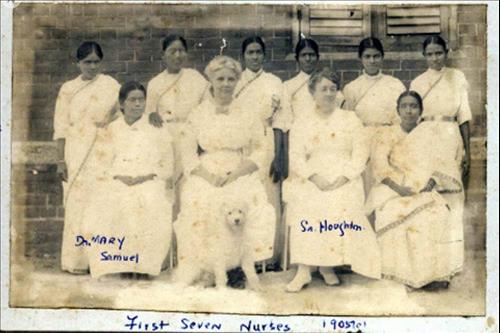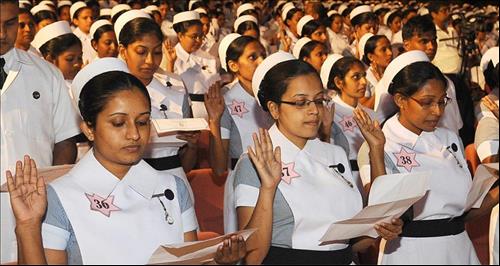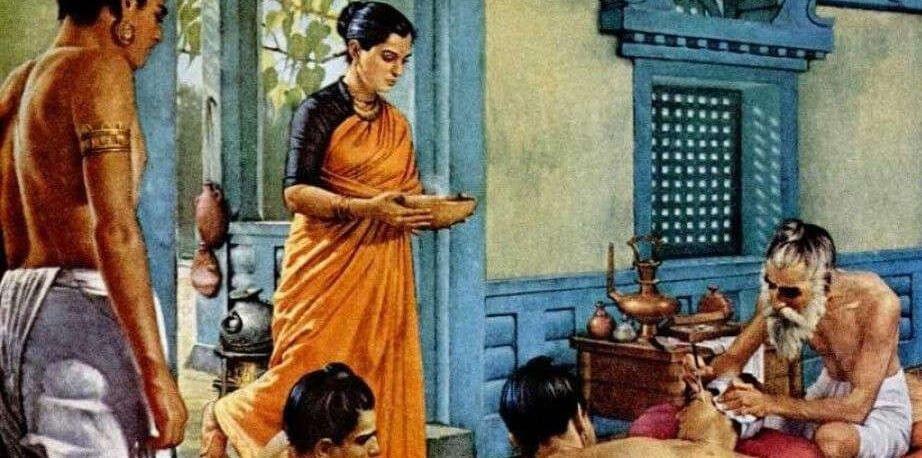
South Asia's nursing tradition goes back to ancient times
(MENAFN- NewsIn.Asia) By Dr. Lopamudra Maitra Bajpai
South Asia has historical records to show prevalence of the nursing profession from very ancient times. A cave inscription in Brahmi from Sri Lanka records the donation of two caves to the Sangha by a certain person by the name Gobuli who was both a physician and a teacher to king Devanampiya Tissa (250 BCE).
Various inscriptions between the 8th- 12th centuries also highlight the prevalence of medical systems in Sri Lanka. These can be found in Medirigiriya, Mihintale and Polonnaruwa. The Mahavamsa, dating to the 5th century CE, mentions the presence of hospitals with doctors and nurses in the 4th century BCE in Sri Lanka as well as within universities like Nalanda in India, Taxila in Pakistan, Mahaviharaya in Sri Lanka.
Similarly, the Manusmriti from India as well as the Charaka-Samhita highlights the presence of nurses as an important part of every treatment and surgery. Evidence of nurses and doctors are found during Emperor Ashoka's reign in ancient India.
When modern medicine came to South Asia in the colonial era, organised formal training in nursing began to be imparted.
Sri Lanka
The first hospital in Sri Lanka was opened in 1800. In 1879 a proper nursing programme commenced, sponsored by the government at the De Soysa Lying-in-Home (1879) and Lady Havelock Hospital (1886). Maternal and infant mortality rates dropped greatly as a result of organised training of midwives and nurses. In 1878 two British nurses arrived in Sri Lanka to impart modern and scientific training. Though not much is available on these initial work, two trained nurses came down from the US to train and initiate a formal nursing programme. They were Martha Crawford and Dorothy Sutherland from the University of Toronto and Yale University respectively. The Colombo School of Nursing (estd in 1939) witnessed a new beginning. It was attached to the Department of Health Services in Colombo.
India
Modern techniques of nursing in India can be traced to military nursing. A house in Chennai at Fort St. George was the first training school. For this, sisters were sent over from St. Thomas' Hospital, London. In 1797, a Lying-in-hospital or a maternity hospital was set up in Chennai and a training school was formally sanctioned in 1854.
By 1865, Florence Nightingale drafted a set of suggestions for modern nursing in India. This is the famous - "Suggestions on a system of nursing for hospitals in India" but this was rejected.
St. Stephen's Hospital in Delhi began with a training institute of women nurses in 1867. In Chennai, the school of nursing was started at the Government General Hospital in 1871 with a diploma course. From 1890- 1900, many schools were started in various parts of India. In 1908, the Trained Nurses Association of India (TNAI) was formed to safeguard the interests of nurses.
The first registration council was formed in the then State of Madras (presently Tamil Nadu) to set up basic standards in training and education of nurses in 1926.

First seven Malayali nurses trained under British matrons in 1905
A four-year Bachelor course was started in the Delhi College of Nursing and the Christian Medical College in Vellore in 1946. Finally, in 1947, the Indian Nursing Council Act was passed (constituted in 1949).
Bhutan
The first five-year development plan in Bhutan (1961-66) saw the beginning of modern healthcare in that Himalayan country, with the inauguration of two hospitals, along with two doctors, and two nurses in 1961. Ever since, Bhutan has witnessed significant progress in the health and wellbeing of the population.
1974 saw the establishment of the Jigme Dorji Wangchuk National Referral Hospital and associated with this was the Royal Institute of Health Sciences for the training of health care workers, including nurses and midwives. People who graduated from here formed the core of the national public health system in the country. In 1982, the first batch of General Nurse Midwife (GNM) was trained in the country. The first batch included names like- Shashi Rai, Neyzang Wangmo, Singye, Kinley Dem, Deki Wangmo.

Graduating Sri Lankan nurses
Nepal
Though Bir Hospital was established in 1896 as the first hospital there was no nurse to cater to the demand till 1936 when a few women were sent to India for studying midwifery for 18 months. Later in 1952, Uma Devi Das and Rukmini Charan Shresth were sent to India to study to be registered nurses with a scholarship from WHO. In 1956, the first School of Nursing was established in Lalitpur in Nepal (currently located in Maharajgunj, Kathmandu as Nursing Campus Maharajgunj). The Trained Nurses Association of Nepal (TNAN) was established in 1961 through the initiative of Ms. Maningss and Ms. Lamu Amatya. Recently, in 2017, the Late Lamu Amatya was formally announced as the country's first trained nurse.
Bangladesh
Before 1947, the region was catered by three Junior Nursing Schools under the Bengal Nursing School. After the partition of India, a professional Senior Nursing School was established in 1947 at the Dhaka Medical College Hospital. A post of Superintendent of Nursing Services was created. A group of nurses were sent to England for further training in 1949. In 1952, the East Pakistan Nursing Council was constituted as a regulatory body. This was renamed later as the Bangladesh Nursing and Midwifery Council (BNMC).
After liberation, the Directorate of Nursing Services was established on May 14, 1977. The Bangladesh College of Nursing, which was established in Mohakhali in Dhaka in 1970, got affiliated to the University of Dhaka in 1978.
Pakistan
At around 1947, Pakistan had just two medical colleges and 292 hospitals with 14,000 beds. In 1948, the Pakistan Nursing Council (PNC) was established (formally constituted by Acts in 1952 and 1973). This, along with the College of Nursing (1956) in Karachi, helped cater to the health sector immensely. The Primary Health Care received further changes following the Declaration of Alma-Ata in 1978.
The Maldives
In the Maldives, the earliest training record in modern nursing dates to 1963-1965, when the first group of nurses were sent abroad for training under the WHO Special Aid Programme. They were Ms. Moomina Haleem, Ms. Naseema Muhammad and Ms. Aishath Ibrahim Didi. Following this, an Irish nurse trainer was sent by WHO- Miss Canon- to help in formal training. Between 1970-1990- there was a remarkable growth of the number of beds in both the public and private hospitals and there was a rising demand for nurses. In 1973, the Allied Health Services Training Centre was established and in 1990, this was renamed Institute of Health Sciences (I.H.S.)

Legal Disclaimer:
MENAFN provides the
information “as is” without warranty of any kind. We do not accept
any responsibility or liability for the accuracy, content, images,
videos, licenses, completeness, legality, or reliability of the information
contained in this article. If you have any complaints or copyright
issues related to this article, kindly contact the provider above.


















Comments
No comment